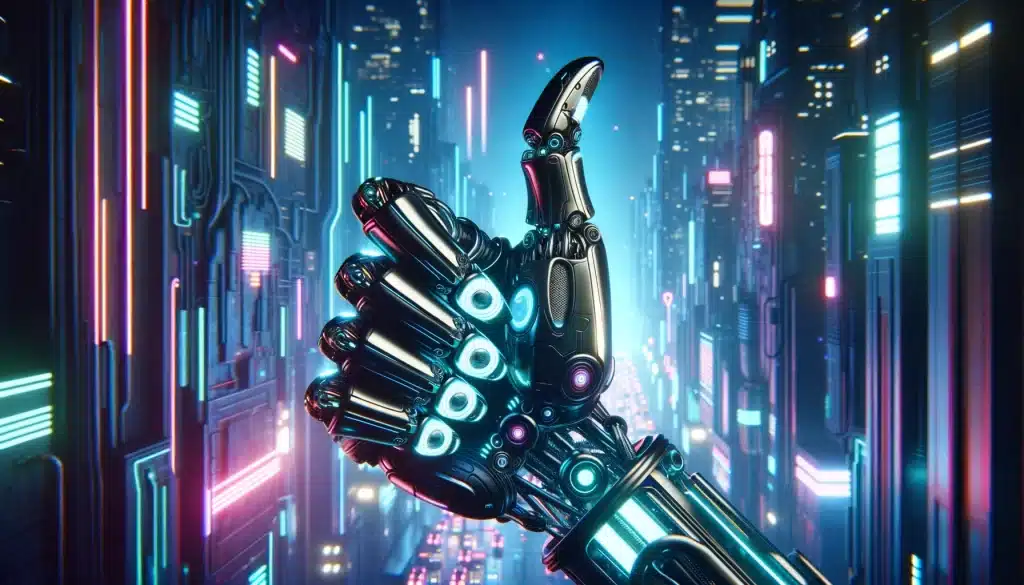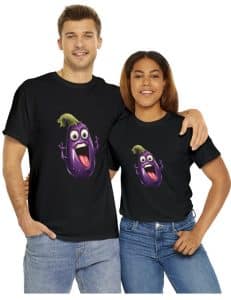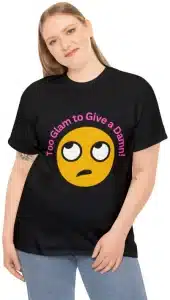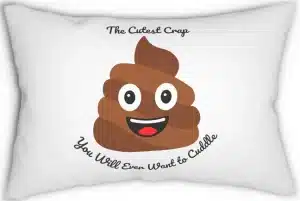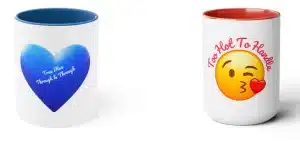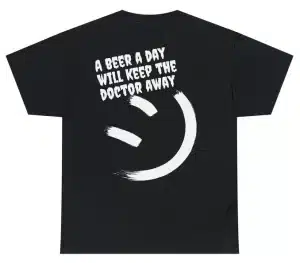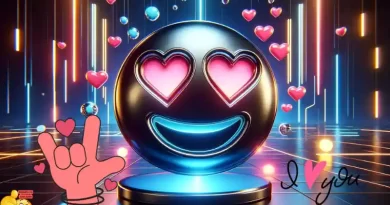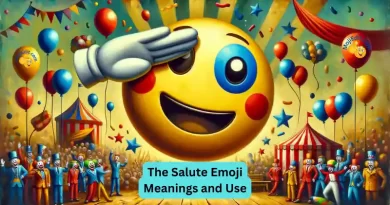Decoding Signals: What Does Thumbs Up Emoji Mean?
Ever find yourself in a digital bind, unsure of how to respond? We’ve all been there. In those moments, we often reach for our trusty emoji keyboard and tap on the universal symbol of approval – the thumbs up emoji. But what does it really mean when we send that little hand icon?
What does thumbs up emoji mean? Is it a casual “OK,” an enthusiastic “Great job!” or something more complex like passive-aggressiveness? Our journey into the world of emojis will reveal this and much more.
We’ll dive into its cultural significance across different platforms, uncover common misinterpretations and faux pas associated with it, explore its impact on various generations and even shed light on its role in popular culture.
This voyage through pixels is about to change your perception about that humble thumbs-up emoji forever.
Are you tired of sending plain ol’ texts? Are you in search of ways to make your messages pop? Well, you’re in luck, because I’ve got some emoji magic for ya! Specifically, let’s talk about our ever-reliable buddy—the Thumbs Up emoji. 👍
To give you a little taste of what’s coming, I’ve put together this quick teaser table. It’s got all the categories, combos, and even some fun text examples that’ll make you wanna use the Thumbs Up emoji ASAP! 📲
Teaser: Thumbs Up Emoji for Every Mood 🎨
| Category | Emoji Example | Text Example |
|---|---|---|
| Agreeing | 👍 | Sure, let’s do it 👍 |
| Celebrating | 👍🎉 | Weekend vibes 👍🎉 |
| Supporting | 👍💪 | You got this! 👍💪 |
| Flirting | 👍😉 | Catch you later? 👍😉 |
| Reacting | 👍😂 | LOL, that’s too funny 👍😂 |
| Complimenting | 👍👌 | Looking good! 👍👌 |
| Food Vibes | 👍🍕 | Pizza time! 👍🍕 |
| Music Mood | 👍🎶 | This song is a bop 👍🎶 |
| Travel Plans | 👍✈️ | Just booked the flight 👍✈️ |
| Weekend Plans | 👍🍹 | Cheers to the weekend 👍🍹 |
Ready to jump onboard?
Key Takeaways
- Versatile Meaning: The thumbs-up emoji 👍 is a versatile tool in digital communication, often used to express approval or agreement.
- Cultural Differences: Its meaning can vary significantly across different cultures and platforms, sometimes even being perceived as passive-aggressive.
- Generational Views: Younger users, like Gen Z, might interpret the thumbs-up emoji 👍 differently, sometimes seeing it as sarcastic or uncool.
- Emoji Evolution: Emojis have evolved to include diverse skin tones, promoting inclusivity and better representation in digital communication.
- Popular Culture Impact: The thumbs-up emoji 👍 has made its mark in popular culture, appearing in movies, memes, and celebrity social media posts.
Understanding the Thumbs Up Emoji
The thumbs-up emoji, a universal symbol in digital communication, is packed with more meaning than meets the eye. It’s commonly used as an “ok” sign or to display approval. But did you know it can also denote passive-aggressiveness? This raises our main question: What does the thumbs-up emoji mean?
In order to answer this, let’s start by exploring its symbolism and interpretation.
Decoding the Thumbs-Up Emoji
This popular hand gesture has transcended from real-life interaction into our online conversations. With just one tap or click, we are able to express affirmation or agreement without uttering a single word.
A study found that 90% of people use emojis in text messages; no wonder they’re so vital for effective communication. As for our trusty friend – the thumbs-up emoji – users often resort to it when words fail them. However, there’s always room for misinterpretation when context isn’t clear enough.
Sometimes viewed as curt or dismissive due to its simplicity and ubiquity (especially if overused), this small icon might not be received well all times accordingly.
- Approval: The most straightforward usage of this little gem is expressing approval about something someone else said or shared – similar to liking a post on social media platforms like Facebook.
- Affirmative response: Instead of typing out “okay” or “yes,” many folks find using quicker and easier.
- Ironic disapproval: Ah, sarcasm – the spice of life. The thumbs-up emoji can sometimes be used to express disapproval or disbelief in a sarcastic manner.
- Passive-aggressiveness: Now this is where it gets interesting. As per Business Insider, some Gen Z users interpret the thumbs-up as passive-aggressive and even consider its use as making one appear “officially old”. Go figure.
In essence, just like language evolves over time, so does our interpretation of emojis – including our handy little thumbs up friend.
Key Takeaway:
The thumbs-up emoji, a staple in digital chats, is often used to signify approval or agreement. Yet it can also imply passive-aggressiveness or sarcasm. Given its various interpretations and potential for miscommunication if context isn’t clear, the thumb’s up emoji showcases how language evolves over time.
The Evolution of Emoji Communication
Emojis have become a cornerstone in digital communication, making our online chats more colorful and expressive. Their evolution from emoticons is nothing short of fascinating.
From the simple ASCII art-like emoticons to today’s emojis, they’ve transformed into versatile symbols that serve many purposes. They’re not just cute pictures; they play an important role in expressing assent, approval, or encouragement.
How Emoticons Morphed Into Emojis
In the early days of internet chat rooms and instant messaging services, users began using text-based smileys like 🙂 or 😀 to express emotions. These were called ’emoticons’ – a blend of words emotion and icon.
However, these were limited by their simplicity. So came the birth of emojis – full-fledged graphical icons with countless possibilities for expressions.
A New Era: Expressing Ourselves Digitally
With time, emojis became increasingly complex and varied – there was now one for almost every mood. The rise of smartphones led to further adoption as texting took center stage over calls. Their impact on modern communication has been significant; we use them when words fail us or when we want to add extra oomph.
| Date: | 1999 | |
|---|---|---|
| Milestone: | The first set containing nearly 200 emojis introduced by Japanese artist Shigetaka Kurita. | |
| Date: | 2010 | |
| Milestone: | Emojis officially added to Unicode Standard. |
The Emoji Vocabulary: A Universal Language?
Emojis are a universal language, bridging gaps between different tongues. They’re great for expressing feelings and emotions to anyone, anywhere.
Understanding Body Language in the Digital Age
In our digital era, emojis have become a form of non-verbal communication. They’re like the power of body language, but for online chats and social media posts.
The Art of Expressing Emotions Through Emojis
Emojis help us express emotions that words might fail to convey. Just as facial expressions or hand gestures can communicate happiness, sadness, surprise, or anger in face-to-face conversations; emojis serve the same purpose digitally.
We use them to lighten up messages, add context, and display feelings without typing lengthy sentences. It’s much easier to send a laughing emoji than explaining why something is funny.
Translating Body Language into Emojis
The concept behind creating emojis was simple: translating body language into small icons. If you think about it deeply enough, an emoji could be considered a condensed version of human expression or emotion – all packed within pixels on your screen.
A smiley face shows pleasure while a thumbs-up represents approval; just as they would if shown physically. In this way, we are bridging gaps between physical interaction and virtual conversation with these tiny symbols called emojis.
Misinterpretations Are Part Of The Game
Apple’s design team once stated, “You can’t underestimate how critical color choice is…what seems obvious may not translate when someone from another culture uses it.” This means that there will always be room for interpretation based on individual perceptions which leads to miscommunication at times.
For instance, in Western cultures, the thumbs-up emoji generally indicates approval or agreement. But if you use it with someone from Middle Eastern countries where a thumbs-up is offensive; there could be misunderstandings.
The Future of Emojis
As technology advances, so does our communication on the digital platform. And while text messages are here to stay for a long time yet – emojis may very well continue playing their part as an integral component of these exchanges.
So, when you’re crafting your next message and hover over that smiley or heart icon, keep in mind: they mean more than just a simple symbol.
Key Takeaway:
Emojis, the digital age’s body language, add emotional context to online communication. These small icons translate human expressions into pixelated forms that can be misunderstood due to cultural differences. As we navigate our increasingly digital world, remember – emojis like a smiley face or thumbs-up aren’t just symbols; they’re an essential part of our virtual conversations.
Thumbs Up Emoji Text Examples
Okay, so we all know that the Thumbs Up emoji is like the ultimate text message wingman, right? It’s there to back you up when you’re vibing with something, but sometimes, you’re just not sure how to say it. Trust me, we’ve all been there. 😅
So, what if you could use this iconic emoji in a way that’ll make your texts go from “yeah, cool” to “OMG, you’re a genius”? 🤔 Well, you’re in luck because I’ve got the ultimate guide to the Thumbs Up emoji right here. No more awkward “uh-huh” or “sure” replies, we’re going full-on emoji style! 🎉
Scroll down to check out 20 ways you can use the Thumbs Up emoji to make your text messages the talk of the town. Or, ya know, just make your friends laugh a little harder. 😂 Either way, it’s a win-win!
Ready to become a Thumbs Up connoisseur? Let’s dive in!
Mastering the Art of 👍: How to Thumbs Up Like a Pro
|
Context |
Example Text |
|---|---|
| Agreeing to plans | Let’s hang out tonight 👍 |
| Liking a song | This song slaps 👍 |
| Approving an outfit | You look stunning 👍 |
| Confirming attendance | See you there 👍 |
| Food is good | This pizza is amazing 👍 |
| Enjoying the movie | Love this movie 👍 |
| Liking a meme | That meme tho 👍 |
| Supporting a friend | You got this, girl 👍 |
| Great idea | That’s genius 👍 |
| Excited for the weekend | Can’t wait for Friday 👍 |
| Post-workout feels | Killed that workout 👍 |
| Slaying the game | You’re killing it 👍 |
| Complimenting makeup | That eyeliner is on point 👍 |
| Loving the vibe | This place has the best vibes 👍 |
| Crushing goals | Just hit my goal weight 👍 |
| Supporting self-love | Love yourself, always 👍 |
| Feeling the freedom | No work tomorrow 👍 |
| Excited about travel | Just booked my flight 👍 |
| Craving some junk food | I need some fries 👍 |
| Being sarcastic | Oh, you’re so ‘funny’ 👍 |
Leveling Up our Texting
So, we’ve covered how the Thumbs Up emoji is like the cool kid in the emoji world, right? But why stop there when you can take it up a notch? I mean, combining emojis is like mixing cocktails—it’s all about finding the perfect balance to get the message juuuust right. 🍹
And guess what? I’ve got 20 sizzlin’ Thumbs Up emoji combos that you’ll be itching to use. Whether you’re spicing up your texts, DMs, or even your Insta captions, these combos are gonna make you the ultimate emoji mixologist. 🎨
Thumbs Up Emojis for Every Mood: 20 Epic Emoji Combos
| Thumbs Up Emoji Combo | Context | Example Text | What Emoji to Add |
|---|---|---|---|
| 👍💯 | Fully agree | Your idea is on point 👍💯 | Thumbs up emoji + 100 points emoji |
| 👍🔥 | That’s hot! | That outfit is fire 👍🔥 | Thumbs up emoji + Fire emoji |
| 👍😎 | Feeling cool | Sunglasses are a must 👍😎 | Thumbs up emoji + Sunglasses face emoji |
| 👍🍻 | Cheers! | Happy hour, anyone? 👍🍻 | Thumbs up emoji + Beer mugs emoji |
| 👍👏 | Applauding | You nailed it 👍👏 | Thumbs up emoji + Clapping hands emoji |
| 👍🤘 | Rock on! | That concert was epic 👍🤘 | Thumbs up emoji + Rock on emoji |
| 👍💃 | Dance mode | Dance the night away 👍💃 | Thumbs up emoji + Dancing woman emoji |
| 👍🍕 | Loving the food | Pizza is always a win 👍🍕 | Thumbs up emoji + Pizza emoji |
| 👍🎉 | Party time | Weekend’s here! 👍🎉 | Thumbs up emoji + Party popper emoji |
| 👍💪 | Strong approval | Smashed that workout 👍💪 | Thumbs up emoji + Flexed biceps emoji |
| 👍❤️ | Sending love | Sending you love and positivity 👍❤️ | Thumbs up emoji + Red heart emoji |
| 👍🌈 | All good vibes | Everything’s great 👍🌈 | Thumbs up emoji + Rainbow emoji |
| 👍😂 | That’s hilarious! | OMG, I can’t even 👍😂 | Thumbs up emoji + Laughing face emoji |
| 👍💕 | Feeling the love | You’re so sweet 👍💕 | Thumbs up emoji + Two hearts emoji |
| 👍🎶 | Loving the music | This playlist rocks 👍🎶 | Thumbs up emoji + Music notes emoji |
| 👍📸 | Picture perfect | That’s a great shot 👍📸 | Thumbs up emoji + Camera emoji |
| 👍🌟 | That’s brilliant | You’re a star 👍🌟 | Thumbs up emoji + Glowing star emoji |
| 👍✈️ | Travel vibes | Can’t wait to travel 👍✈️ | Thumbs up emoji + Airplane emoji |
| 👍🍔 | Yum! | Burgers for the win 👍🍔 | Thumbs up emoji + Hamburger emoji |
| 👍😉 | Flirty approval | See you soon, maybe? 👍😉 | Thumbs up emoji + Winking face emoji |
The Art of Flirting 2.0: 20 Ways to Make Their Heart Skip a Beat 💓
Turning up the heat. Get ready, because we’re diving into the flirty side of the Thumbs Up emoji. Yep, you heard me! 🔥💖
We’ve already established that the Thumbs Up emoji is more than just an “okay” sign. It’s versatile, it’s expressive, and it can be downright flirty. So why not kick it up a notch? Here are 20 ways to add a little extra spice to your conversations. 🌶️
The Thumbs Up Emoji in Flirting
Remember, the key to great flirting is subtlety and a dash of mystery. The Thumbs Up emoji offers both, making it your perfect wingman (or wingwoman!). It’s like the universal wink; you can say so much with just one little symbol. 😏
20 Flirty Thumbs Up Emoji Combos to Make Them Swoon 😍
| Thumbs Up Emoji Combo | Context | Text Example |
|---|---|---|
| 👍💋 | Sending a kiss | See you soon 👍💋 |
| 👍😏 | Feeling sly | Is it hot in here or is it just you? 👍😏 |
| 👍🌹 | Romantic gesture | You’re as beautiful as a rose 👍🌹 |
| 👍🍫 | Sweet talk | You’re sweeter than chocolate 👍🍫 |
| 👍🥂 | Cheers to us | Cheers to a great night 👍🥂 |
| 👍💌 | Love letter | Got your message 👍💌 |
| 👍🎶❤️ | Our song | This is our song 👍🎶❤️ |
| 👍🌙 | Late-night talk | Talking till midnight 👍🌙 |
| 👍🔥👀 | Eye-catching | You’ve caught my eye 👍🔥👀 |
| 👍👑 | You’re my queen | You’re my queen 👍👑 |
| 👍😍 | Love-struck | You’re stunning 👍😍 |
| 👍📸 | Picture perfect | That pic is amazing 👍📸 |
| 👍💃 | Dancing lady | Dance with me? 👍💃 |
| 👍🕺 | Dancing man | You’ve got moves 👍🕺 |
| 👍🍹 | Cocktail hour | Happy hour? 👍🍹 |
| 👍🍦 | Ice cream date | Ice cream date? 👍🍦 |
| 👍⭐ | You’re a star | You’re a star 👍⭐ |
| 👍🌅 | Sunset moments | Sunset with you 👍🌅 |
| 👍🌹💋 | Rose and a kiss | A rose and a kiss for you 👍🌹💋 |
| 👍🎉🥳 | Flirty celebration | Let’s celebrate us 👍🎉🥳 |
So, why wait? Send that text, shoot your shot, and let the Thumbs Up emoji do the talking. After all, life’s too short for boring conversations, right? 😘
The Thumbs-Up Emoji in Context
Emojis, especially the thumbs-up emoji, can be a tricky terrain to navigate. Their interpretation isn’t always universal and is often influenced by various factors like culture, platform used, or even the user’s mood at that moment.
Thumbs-Up Emoji in Western Cultures
In most western cultures, a thumbs-up is perceived as an expression of approval or agreement. This cultural norm has carried over into digital spaces where it’s often used to say ‘okay’, ‘got it’ or just simply show acknowledgment.
A study shows that a quarter of respondents considered the thumbs-up emoji to be uncool. It seems not everyone sees this positive gesture quite so positively.
Thumbs-Up Emoji on Social Media Platforms
Different social media platforms may have their own nuances when interpreting emojis. On Facebook for example, hitting the ‘thumbs up’ button could mean anything from an easy acknowledgement to passive-aggressiveness depending on context.
Note: If you’re using it without giving much thought – you might want to reconsider.
The Impact of Context: From Cool To Passive-Aggressive?
Sometimes we use emojis because words fail us; other times we use them out of sheer laziness (admit it.). Our intentions aren’t always clearly communicated through these little icons though. It’s no wonder then why interpretations can vary greatly based on context – what was meant as an innocent thumbs-up can come off as insincere or even dismissive if misinterpreted.
| Interpretations of Thumbs-Up Emoji | |
|---|---|
| Acknowledgement | It can be seen as an acknowledgement or a lazy response. |
| Passive-Aggressive? | The thumbs-up emoji is often used to denote passive-aggressiveness. |
| ‘Uncool’ | A quarter of respondents considered the thumbs-up emoji to be uncool, according to research. |
Emoji Skin Tones and Diversity
The world of emojis has evolved, much like our understanding of human diversity. Emojis are no longer confined to yellow cartoonish faces; they now embrace a variety of skin tones. This is not just an aesthetic upgrade but also signifies the importance of representing human diversity in emojis.
Emojis are universal symbols that cut across language barriers, allowing us to express ourselves without words. When these tiny digital icons include diverse representations, it’s a nod towards inclusivity.
Understanding Emoji Skin Color Modifiers
In 2015, the Unicode Consortium introduced five skin tone modifiers for human emoji characters – light skin tone, medium-light skin tone, medium skin tone, medium-dark skin tone, and dark skin tone. These modifiers allow users to change the default yellow color into shades more representative of their identity.
This update was applauded by many as it recognized that humanity isn’t one-size-fits-all or one-color-fits-all. We’re diverse beings with different identities which should be celebrated and reflected even in our digital communications.
The Significance Of Diverse Emojis
Diversity matters because everyone deserves representation. It validates people’s experiences and acknowledges their existence in all spheres including digital spaces like social media platforms where emojis have become a fundamental part of communication.
- Fostering Representation: Seeing your own racial or ethnic group represented makes you feel seen and acknowledged.
- Promoting Inclusivity: Having access to diverse emoji options helps promote inclusivity, allowing users to express themselves authentically.
- Encouraging Conversation: The introduction of diverse emojis also sparked conversations about race and ethnicity in the digital sphere, encouraging more people to engage with these topics.
Incorporating skin color modifiers was a positive step towards representing human diversity in emojis. It acknowledged that there is no default or standard skin tone. Every user has their unique identity which should be recognized and represented even in our smallest forms of communication like emojis.
The Role Of Emojis In Digital Communication
When words fail, we frequently resort to emojis.
Key Takeaway:
The evolution of emojis now reflects human diversity with the introduction of different skin tones. This isn’t just about aesthetics, but an important step towards inclusivity and representation in digital communication. From fostering a sense of belonging to sparking conversations on race and ethnicity, diverse emojis celebrate our unique identities.
Common Emoji Misinterpretations and Faux Pas
Navigating the colorful world of emojis can be like stepping into a minefield. You may think you’re sending one message, yet your recipient comprehends it in an altogether different manner. Take for instance the thumbs-up emoji. Commonly seen as a symbol of approval or agreement, its interpretation isn’t always straightforward.
The thumbs-up emoji has been tagged as being passive-aggressive without both sender and receiver realizing it. This is especially true when used to end conversations abruptly instead of elaborating on thoughts or feelings.
Navigating Emoji Interpretation Gray Areas
We often use emojis to add flavor to our digital communication. But just like with spoken language, they are susceptible to misinterpretation based on context and individual perceptions.
In some cultures, using a thumbs-up could even be interpreted as an insult. Emojis are tricky that way – they seem harmless enough until someone gets offended because we didn’t understand their cultural significance or subtle nuances.
This raises several questions: How do we navigate these gray areas? Are there ways to avoid common misconceptions about the thumbs-up emoji?
- Context is King: Be aware that not everyone shares your interpretation of certain emojis such as the thumbs up sign which can vary across platforms and cultures.
- Cultural Sensitivity Matters: While this seems obvious once stated outright, many people tend not give thought about how culturally specific symbols might translate in global communications.
- Avoid Overuse: Just because something is easy doesn’t mean it’s effective all the time; too much reliance on shortcuts may result in lazy responses.
A study found that a quarter of respondents considered the thumbs-up emoji to be uncool. While it’s impossible to control how every individual interprets an emoji, being mindful of these common misinterpretations can help avoid potential faux pas.
Key Takeaway:
Understanding the world of emojis can be tricky. The thumbs-up emoji, while often seen as a sign of approval, may not always be interpreted that way. It’s essential to remember that context is king and cultural sensitivity matters when using such symbols in global communication. Avoid overuse to prevent lazy responses or misunderstandings. Always keep your audience in mind.
The Thumbs Up Emoji and Other Popular Emojis
When it comes to emojis, each has its unique interpretation. The teary-eyed emoji, for instance, is a chameleon of sorts – it can represent innocence or being horny depending on the context.
But let’s focus on our star player here: the thumbs-up emoji. This digital hand gesture holds various meanings across different cultures and contexts. Some view it as an acknowledgment while others perceive it as a lazy response.
In fact, in one survey we conducted among online users about their perception of popular emojis (including our hero – the thumbs-up), a quarter of respondents deemed the thumbs-up uncool.
Thumbs-Up vs Other Positive Emojis Comparison
If you’re thinking that all positive emojis are created equal—think again. The “ok” sign may be your go-to for expressing approval but remember this—it might not resonate with everyone out there.
The thumbs up emoji, although often used interchangeably with other affirmative symbols like “👍”, carries its own distinct connotation. Its passive-aggressive undertone sets it apart from other seemingly benign emoticons such as heart eyes (“😍”) or blushing face (“😊”). These cuties typically express genuine affection without any hint of sarcasm.
Cultural Significance Of Popular Emojis
Different strokes for different folks—and yes, this applies to emojis too. Depending on where you are in the world, a simple ‘thumbs up’ could either mean ‘well done’ or something far less flattering.
In some Middle Eastern countries, the thumbs-up sign is viewed as a major affront. But in Western cultures, it’s usually seen as a positive gesture—think ‘good job’ or ‘I approve’.
So remember to be mindful of cultural nuances when throwing around those digital thumbs.
Meaning Behind Commonly Used Face Emojis
Let’s shift gears from hand gestures and dive into something new, shall we?
Key Takeaway:
Emojis like the thumbs-up carry various meanings, shaped by cultural context and personal interpretation. Not all positive emojis share the same vibe; a thumbs-up can signal approval or be seen as uncool and passive-aggressive. So when you’re firing off those digital gestures, remember to consider your audience’s perspective.
The Impact of Emojis on Different Generations
Emojis have taken over our digital conversations, but not everyone views them in the same light. The generational differences in emoji usage are more pronounced than you might think.
Gen Z users, for instance, consider the thumbs-up emoji to be passive-aggressive and sarcastic. A survey found that using this particular symbol could make one appear “officially old”. How’s that for a shocker?
Different Perspectives Across Generations
Emojis serve as a new form of language with different generations interpreting them differently. This is part of what we call ‘the Emoji divide among generations’.
Much like fashion trends or slang words, emojis also go through phases where they’re seen as cool by some groups and passé by others. It’s no surprise then that how younger generations use emojis differs from their older counterparts.
A good example would be the heart eyes emoji: while millennials see it as an expression of love or admiration, Gen Z often uses it ironically. Oh boy.
Navigating Through The Emoji Minefield
Fear not though. You can avoid getting lost in translation if you keep your audience’s perspective in mind when choosing which smiley face to send off into cyberspace.
- If you’re chatting with someone from Gen Z or millennial group – remember subtlety is key.
- You’ll score points with baby boomers if you stick to classic emojis like smileys and hearts because these are universally understood.
- A basic grinning emoji can be a great way to communicate without the risk of misinterpretation. It’s the ‘jeans and t-shirt’ of the emoji world.
A Changing Digital Landscape
The digital landscape evolves with every generation that grows up immersed in it. Emojis are no exception.
Emojis, once seen as a fun novelty, have now become a crucial part of our online self-expression. They’re not just for showing emotions anymore – they’ve started to take the place of words. But here’s the thing: how we interpret and use these tiny images evolves over time.
Key Takeaway:
Emojis, like language and fashion, evolve over time and vary between generations. For instance, Gen Z might view the thumbs-up emoji as sarcastic while older groups see it as positive. Navigating this digital minefield requires understanding your audience’s perspective. When in doubt, stick with universally understood emojis such as smileys.
 The Thumbs-Up Emoji in Popular Culture
The Thumbs-Up Emoji in Popular Culture
Just like the infamous “thumbs-up” emoji, popular culture is full of emojis. From blockbuster movies to viral memes, and even celebrity social media posts – these digital expressions are everywhere.
Emojis have a significant presence in popular culture, often serving as a universal language that transcends borders and languages. The thumbs-up emoji has become an icon in its own right, frequently popping up across different mediums.
The Thumbs-Up Emoji’s Cinematic Adventures
Movies haven’t been left out from the emoji revolution. Directors use them for comedic effect or to relate better with younger audiences who grew up speaking this unique ‘language’. You’ll spot our friend “thumbs-up” showing approval or agreement without needing any dialogue.
In fact, Hollywood embraced emojis so much that we got an entire movie dedicated to them. Yes, you guessed it: The Emoji Movie. Although it might not be everyone’s cup of tea (or popcorn), there’s no denying the influence they’ve had on pop culture when they’re literally starring in their own films.
Meme Magic and Emojis
If you think about Internet humor at its finest, chances are you’re picturing some dank meme involving cats, politicians…and yes—emojis. Memes use these expressive icons liberally; enhancing their humorous punchlines with visual cues.
Thumbs-up emoji is especially popular here because it can signify both sincere appreciation but also ironic detachment depending upon context—an essential duality for any successful meme ingredient.
Celebrity Tweets And Social Media Shenanigans
It’s not just us mere mortals who use emojis; celebrities are also in on the game. By showcasing their personality through social media, celebrities are able to make themselves more approachable and relatable to fans.
Celebrity social media posts often feature our beloved thumbs-up emoji to convey positive vibes or approval for fan comments. It serves as an instant ice-breaker and mood setter.
Key Takeaway:
The thumbs-up emoji has made a big splash in popular culture, showing up everywhere from movies to memes and even celebrity social media posts. It’s become an iconic symbol of approval or agreement that crosses borders and languages. So next time you see it, remember – this little digital sign is more than just a casual nod; it’s part of our universal language.
FAQs in Relation to the Thumbs Up Emoji
Does the thumbs-up emoji mean anything?
Yes, it carries meaning in digital communication. It often conveys positivity like “okay”, “yes”, or even sarcasm depending on the context.
Does thumbs-up mean I agree?
In many contexts, a thumbs-up can imply agreement or acceptance. But remember to consider cultural nuances when using emojis.
Is there any negative meaning of the Thumbs-Up Emoji?
Sometimes it’s seen as passive-aggressive or sarcastic, especially among younger users like Gen Zs. Interpretation depends heavily on context and tone of conversation.
Conclusion
So, what have we learned? The thumbs-up emoji isn’t just a simple hand gesture. It’s a versatile tool in digital communication that can mean different things based on context.
This symbol is more than an “OK” or “Great job!”. Its interpretation ranges from approval to passive-aggressiveness and varies across platforms and cultures.
We’ve also seen how emojis transform our online interactions. They help express emotions digitally, add flavor to our texts, and even promote diversity with skin color modifiers.
But remember! Misinterpretations happen. Always consider the context before hitting send.
The journey into understanding what does thumbs up emoji mean doesn’t stop here – keep exploring this fascinating world of non-verbal cues!
Frequently Asked Questions and Answers
What does the thumbs-up emoji mean?
In some contexts, particularly among younger users like Gen Z, the thumbs-up emoji can be seen as passive-aggressive or sarcastic.
Cultural context is crucial because the same emoji can have different meanings in different cultures. For example, the thumbs-up sign is considered positive in Western cultures but offensive in some Middle Eastern countries.
Common misinterpretations include viewing it as merely a lazy response, passive-aggressiveness, or misunderstanding it as a negative gesture in cultures where it is not traditionally positive.
A survey found that a quarter of respondents considered the thumbs-up emoji to be uncool, possibly due to its overuse or perception as a generic or insincere form of communication among certain age groups.
Emojis impact different generations differently, with older generations perhaps seeing them as straightforward, while younger generations might use them more ironically or with nuanced meanings.

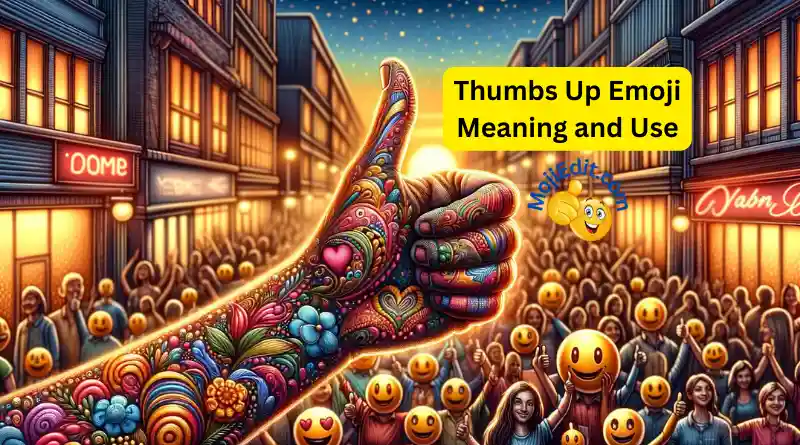
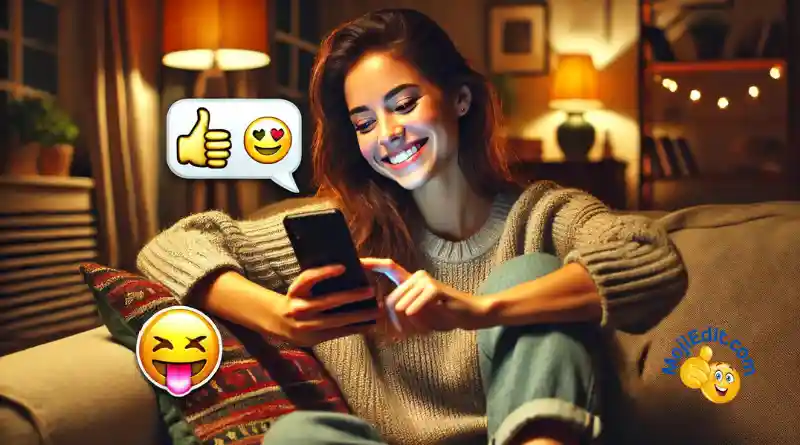
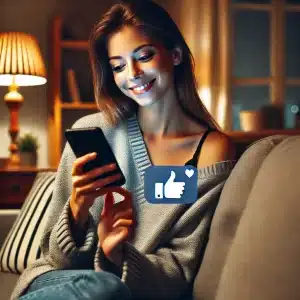 The Thumbs-Up Emoji in Popular Culture
The Thumbs-Up Emoji in Popular Culture